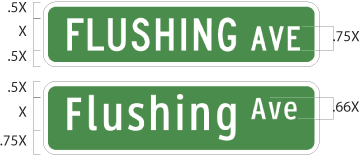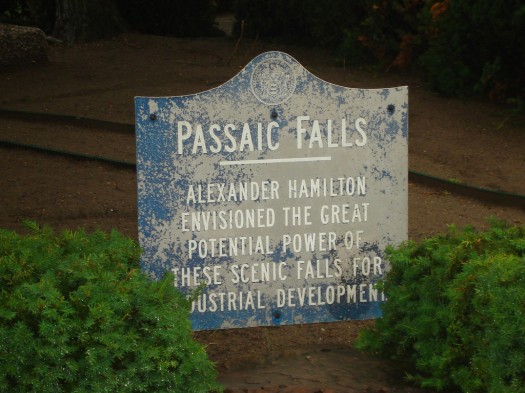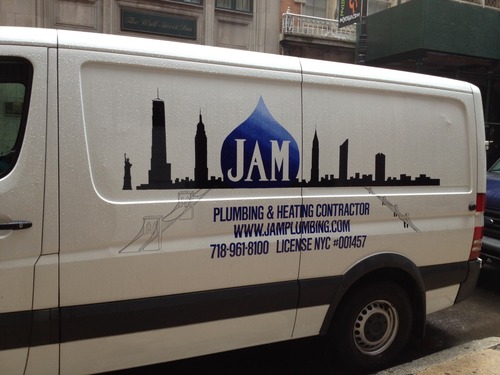
We are celebrating 15 years — and counting — of stories that are deeply researched and deeply felt, that build a historical record of what the city has been.
We are celebrating 15 years — and counting — of stories that are deeply researched and deeply felt, that build a historical record of what the city has been.
HELP ME TO HELP YOU
First, NYCHA came under fire for not releasing a $10 million internal report by the Boston Consulting Group, which appeared to be completed in May. Then, earlier this week, the agency finally released the document in response to growing demand from city officials and public advocates. Now, NYCHA is in hot water again: the report’s key findings suggest, according to the New York Times, that the agency cut its annual spending by $70 million and “streamline an operation that has a backlog of 330,000 orders for maintenance and repairs. The city’s 400,000 public-housing residents sometimes have to wait years for the agency to fix problems… Overall, management and maintenance was described as ‘sub-optimal,'” WNYC reports. The agency was also criticized for its highly bureaucratic operation, especially with regard to its often inconsistent purchasing system and its unusual governance structure, where three members of the board are salaried Mayoral appointees. In a blistering editorial, the Daily News, which has conducted an ongoing investigative series on the agency, declares, “Bottom line: Rhea, Youssouf and Lopez have run — or attempted to run — a $3-billion-a-year enterprise, affecting the lives of 400,000 residents, without the data necessary to make sound decisions. Mom and pop stores have better management controls.” However, while Mayor Bloomberg, according to the New York Daily News, admits it could do better, he continues to defend the agency, citing the hard work of administrators who “have done a very good job”. He believes that making the board positions (other than Chairman Rhea’s) voluntary and adding an additional seat for a NYCHA resident will help get NYCHA back on track.

Comparison of old-style Highway Gothic (top) with new Clearview font (bottom) | Image courtesy of Cartype
I SAW THE SIGN
Are you one of the New Yorker who astutely observed in recent months that certain street signs’ typeface and case has changed? You’re not imagining it. The New York Times reports this week on the Federal Highway Administration’s mandate to the NYCDOT to eventually replace all 250,000 of its street signs with mixed-case names; so far, 11,000 have been changed. The City has decided on its own volition to utilize a new font, called Clearview, which increases legibility when compared with the traditional so-called “Highway Gothic.” Recently, the highway administration eased up on imposing deadlines for completion of the project nationwide, after facing criticism for federal government overreach in city and state affairs.

Sign near the Passaic Falls in New Jersey | Image by flickr user Zainub
SUPERDUPERFUND
Also in The Times this week, the Science section takes on Superfund sites, covering the EPA’s recent policy shift of cleaning entire stretches of toxic waterways, rather than isolated sites. This process is often costly and difficult, given that in water “… the slightest movement can stir up long-buried wastes that tides, floods, even motorboat traffic can spread upstream and down. Trying to predict how everything will work is so complicated that preliminary planning alone can cost more than an entire land-based cleanup.” The New York-New Jersey area, which has held the title of most Superfund sites since the program’s inception, has recently had its rivers and waterfronts targeted for full-scale remediation: the Passaic River, part of the larger 17-mile Diamond Alkali Site; a 40-mile stretch of the Hudson River polluted by PCBs; and the entire sediment layer of the Gowanus Canal and Newtown Creek (two sites we’ve covered on the Omnibus in detail, see here and here). For a more detailed explanation of individual sites and the dredging process, read the full article here.
CASTLES MADE OF SAND
Speaking of dredging, a new post on BLDGBLOG pays tribute to sand, which has its very own chronicler in Michael Welland, whose book and blog explain its evolving role in the construction of New York City. Sand is a major component of concrete, and in the 1860s “immigrant workers from Europe, many from Sardinia, first hauled sand with wheelbarrows; the excavations grew with mechanization, and eventually the cliffs and the landscape were leveled,” in Port Washington, Long Island. A monument has been erected at this main site of the sand mining, where “200 million tons of sand had been excavated to build the city — bridges, highways, the Empire State Building, the Chrysler Building and the World Trade Center.” For more on the fascinating story, check out the electronic archive of resources — photographs, oral histories, scrapbooks — compiled by the Port Washington Public Library.

World Trade Center One silhouette | Image courtesy of Rolando Pujol
FINDING FREEDOM
We’ve all seen it on the streets of New York: company trucks decorated in graphic iconography of the New York City skyline. Many such illustrations display a silhouette of the Twin Towers. Rolando Pujol at the Retrologist brings us images this week from the side of a truck on South William Street, just blocks from the World Trade Center site, showing a selection of famous Gotham buildings and structures: the Empire State, Citigroup, Sony, Lady Liberty and, proudly, WTC 1. While the presence of the new tower in the landscape is not groundbreaking news, its appearance in stylized representations of the city is something of a milestone: Pujol is struck by the rapid speed at which New Yorkers accept and appropriate features of the changing skyline. Check out the images here.
CLOGGED ARTERIES
According to Tanya Snider, Capitol Hill editor of Streetsblog, the precise political definition of the word “congestion” has much higher stakes than mere semantics. A lot of policies and capital investments rely on exactly how the word is defined by the Congestion Mitigation and Air Quality Improvement program (CMAQ), and “if the agency follows the prevailing orthodoxy, states could be rewarded for wasteful highway spending. If it adopts better measurements, smarter investments and less wasteful spending will follow.” Clark Williams-Derry, a researcher quoted in the article, comments that looking at congestion as a single metric is akin to looking at only one statistic in basketball — simply not enough for a big picture. The main takeaway from the writeup is that “a long commute along miles and miles of free-flowing highways is no bargain compared to a short commute in dense traffic, not to mention an even shorter commute on transit.” To read it in full, click here.
BEES IN THE TRAP
Chickens, farms and now bees: New York’s rooftops continue to offer new (and old) uses that are reinventing outdoor space. Edible Geography describes the buzz surrounding the Waldorf-Astoria’s new apiary, joining landmarks like the Opéra in Paris and Chicago’s City Hall as sites of urban pollinators. It seems, however, that some organizations aren’t installing the beehives just for honey or locavore-cred: a church in York, UK put several hives on its roof after a particularly bad string of lead-shingle thefts, and “since the hives were installed on the church … there has been no further trouble.” Sweet idea, indeed.
EVENTS and TO DOs
SEED
DesignCorps and the Social Economic Environmental Design (SEED) Network, in partnership with the University of Minnesota College of Design, this week announced two calls for entries. SEED, a network begun in 2005, is comprised of a dynamic and growing core of members who seek to effect change for the better through positive design and civic engagement. It will be accepting submissions for both the SEED Awards competition, and inclusion in the SEED field guide until the deadline of Monday, October 1, 2012. For the project submission outline, visit SEED’s website.
PUBLIC SPACE THROWDOWN
The Flux Factory in Long Island City will be presenting its ongoing Flux Death Match series, in which online debates are handed over to four experts. This time, the topic of discussion is titled Is Small Big Enough? (Planning & Intervening in Public Space). The debate will include arguments “over the successes and failures of different approaches to creating a more inhabitable city. We’ll also delve into the sticky subject matter of finances and evaluation criteria, the politics of a gesture, and how strategies get co-opted.” The event starts at 8:00 pm and the debate begins at 8:30 sharp.
The Roundup keeps you up to date with topics we’ve featured and other things we think are worth knowing about.
The views expressed here are those of the authors only and do not reflect the position of The Architectural League of New York.